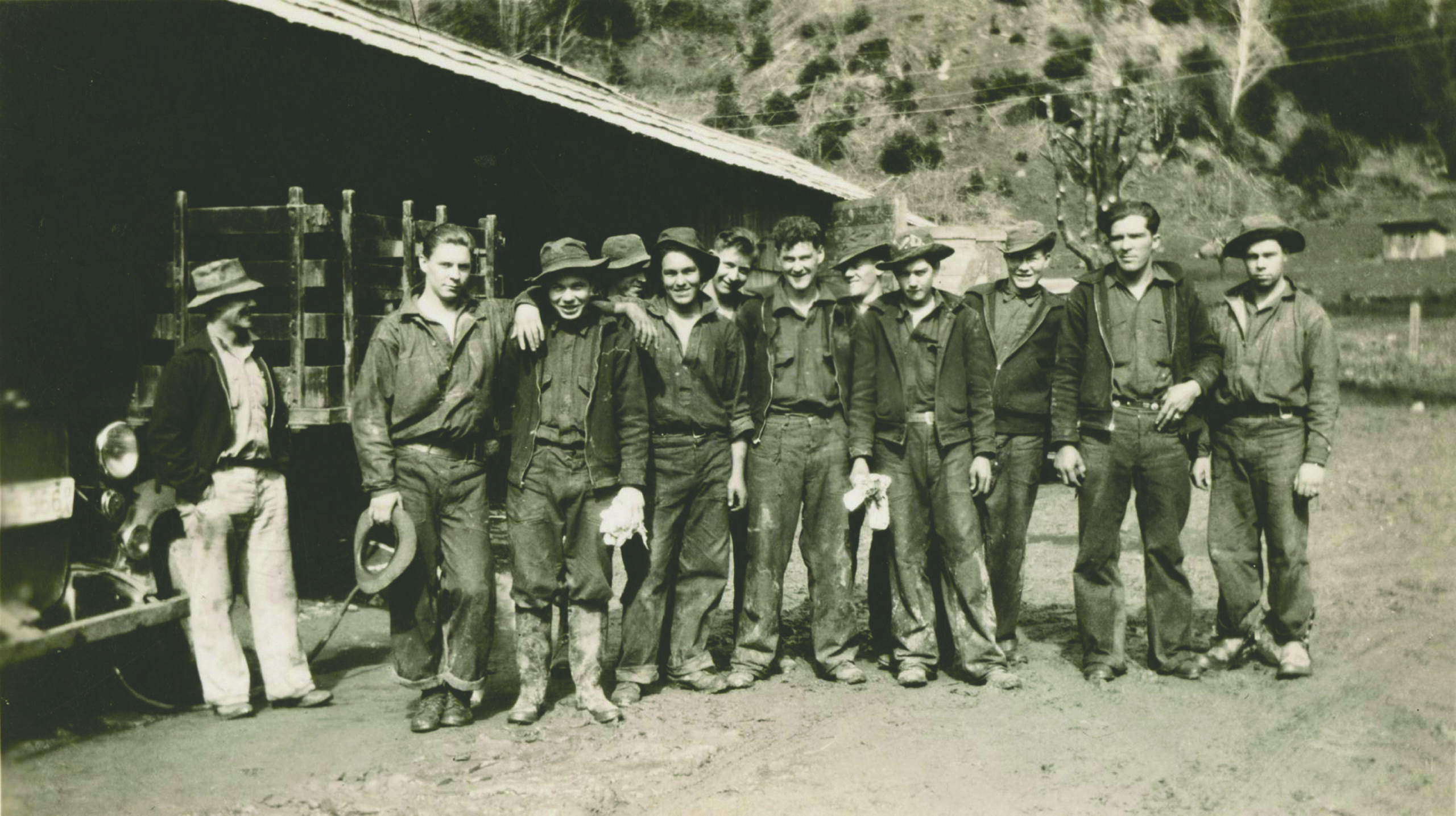By Robert Matsumura The Mountain Times
During the Great Depression, when America’s economy was at its lowest, the Civilian Conservation Corps (CCC) emerged as a New Deal program that not only provided jobs for young, unemployed men, but also helped restore and enhance America’s natural landscapes.
In Oregon, the CCC’s contributions were extensive, from reforestation efforts to the construction of critical infrastructure, leaving a legacy still evident in our state’s parks, forests, and public lands.
A New Deal for Nature and People
Established in 1933 to address two major crises, the CCC helped address both the rampant unemployment caused by the Great Depression, and the environmental damage resulting from over-logging and soil erosion. The aim of the program was to provide jobs for young men between the ages of 18 and 25, while also helping to rehabilitate America’s natural resources.
The CCC employed nearly three million men across the nation, with Oregon being a significant player in the program as thousands of enrollees helped contribute to the state’s conservation efforts.
Enrollees earned $30 a month, of which $25 was sent home to their families. Working in teams, the new CCC members were educated in forestry, construction, and land management. More than just a work program, the CCC instilled a deep appreciation for the environment and fostered a sense of community and purpose among its members.
Building a Lasting Legacy in Oregon
The CCC’s projects spanned the state’s diverse landscapes, from the rugged coastline to the Cascade Range. It seems that wherever one turns in Oregon, be it state parks, highways or forested land, the CCC’s work endures to this day.
Oregon Caves National Monument
The Oregon Caves National Monument was one of the CCC’s premier projects. Workers helped improve access to the caves and built a new road and historic lodge. Construction of the cave entrance and surrounding infrastructure provided easy access to the monument for visitors, helping make it a key destination for tourists and a triumph for conservationists.
Silver Falls State Park
Silver Falls State Park was another site transformed by the CCC. The park’s famous Canyon Trail — which include paths that pass behind the falls — were forged by the CCC, providing visitors a unique view of nature. The park’s bridges and picnic areas were also created at this time, and these structures continue to enhance the park’s accessibility and scenic allure, drawing visitors year-round.
Bonneville Dam and the Columbia River Gorge
Another key CCC contribution was the development of infrastructure along the Columbia River. At the Bonneville Dam, workers assisted in building roads and other facilities that would serve both as tourist attractions and key transportation routes. The construction of U.S. Route 30 — also known as the Historic Columbia River Highway — was also a project enhanced by the CCC’s arduous efforts. Not only did enrollees construct scenic viewpoints, they helped manage erosion along the highway, ensuring that the region’s natural beauty could be enjoyed by future generations while maintaining its environmental integrity.
The Sunset Highway
An essential route connecting Portland to the Columbia River Gorge, the Sunset Highway, was a critical project for both transportation and tourism in Oregon. Included in the CCC’s work on the project were the construction of stone guardrails, rest areas, and scenic overlooks that allowed travelers to pause and take in the dramatic views of the natural landscape.
Rocky Butte Scenic Drive
In Portland, another key project undertaken by the CCC was the Rocky Butte Scenic Drive. CCC workers designed and built the road leading up to the summit of Rocky Butte, providing panoramic views of the city and Mount Hood. In addition, workers helped develop nearby parks, including terraced gardens and other landscaping that enhanced the area’s natural beauty.
Crater Lake National Park and Lodge
Perhaps one of the most famous CCC projects was the construction of the Crater Lake National Park lodge. Built between 1937 and 1938, the lodge was crafted with local stone and timber, artfully blending into the surrounding landscape. The CCC crews also labored to develop the Rim Drive, a 33-mile road that provides breathtaking views of the lake. These accomplishments made Crater Lake one of the most visited and cherished national parks in the country.
Reforesting Oregon’s Land
During the early 20th century, Oregon’s forests were decimated by over-logging and catastrophic wildfires. The CCC’s role in reforestation was one of the most important environmental impacts of the program. CCC crews planted millions of trees in areas ravaged by logging, helping to restore Oregon’s once-pristine forests.
Along with reforestation, the crews worked on critical erosion control measures. Along Oregon’s riverbanks and hillside slopes, they built check dams, terraces, and stone walls to prevent soil erosion. These efforts improved water quality, and were vital in restoring the health of Oregon’s watersheds, ensuring that the state’s rivers and streams could continue to support fish populations, particularly salmon and steelhead.
A Lasting Influence on Conservation
Far more than just its physical contributions, CCC’s deep cultural impact resonated with both the men who worked in the program and the communities they served. Working for the CCC instilled a lifelong appreciation for conservation in many of its members, many of whom ended up working in environmental fields, including forestry, firefighting, and land management. The program also spurred the growth of federal conservation agencies, such as the U.S. Forest Service, which continues to manage and protect Oregon’s public lands.
A Lasting Heritage
There is no doubt that the Civilian Conservation Corps left an indelible mark on Oregon, shaping the state’s landscapes and cultural heritage immeasurably. From the historic stonework at Silver Falls and the Oregon Caves to the stunning vistas of the Rocky Butte Scenic Drive, and the labor performed on the Sunset Highway, the legacy of the CCC is stitched into the fabric of our state’s natural beauty.
Their contributions provided not only immediate economic relief during the Great Depression, but also served as the impetus for long-term environmental stewardship that resonated with Oregonians and visitors alike. So, the next time you’re exploring Oregon’s parks and forests, tip your cap to the vision and dedication of the thousands of young men who worked tirelessly to protect and preserve the natural treasures we hold so dear.



